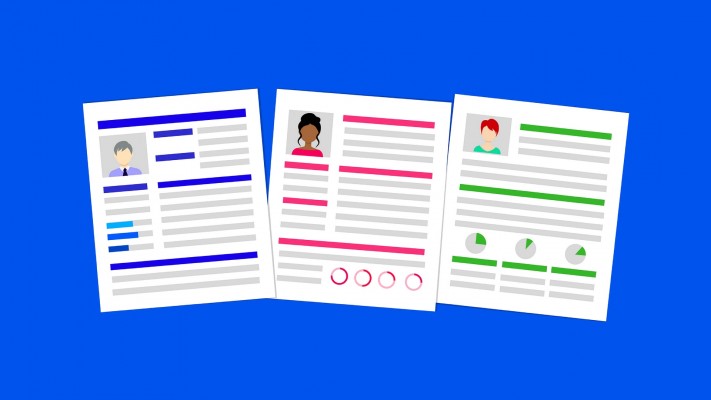15 Simple (But Important) Things To Remember About A CV.

posted:2 years agobyAwatef Hamdiin CVs
Whether you have already prepared your CV or not, it is necessary to respect standards expected from recruiters. As an applicant you should know that not “any CV” is suitable for the job. There are certain rules and tips to improve your chances of finding a job. In the Netherlands, the professional opportunities are appealing to both experienced and new graduates. Here are 15 “tricks” that will allow you to make your CV stand out and catch the eye of the recruiter.
How to Write a CV in the Netherlands?

In the Netherlands, employment requires submitting certain documents to apply for a job. A CV is required on many occasions such as applying for a job, a fellowship program, an internship, etc.. In European countries, a CV must meet the standards to present the necessary information of the candidate. Recruiters in the Netherlands use an ATS SOFTWARE to help them filter out a huge number of submitted CVs. If you want your CV to reach the selection phase, you should include the following information,
- Name
- Contact Information
- Personal Information ( if required such as date of birth, marital status, nationality)
- Profile
- Work Experience ( in case of being an entry-level applicant put internship)
- Education
- Skills
- Achievements
Since each professional sector has its own terms and conditions to filter out candidates, Fratres will introduce you to the necessary guidelines to win a job and boost your professional chances
1.Read the Job Offer Very Well:
Having a ready made CV is not a guarantee to get a job. Some professions are specific and have certain requirements such as the number of experience years, being based in a specific city, being a member of a specific association, being eligible to certain professional contracts. That’s why reading the job offer will help you tailor your CV to the required profile.
2. Copy paste a Job Description into a Word Cloud Generator:
For applicants who are not excellent in writing, this is a clever trick to identify the main keywords. This tip also works for applicants who cannot write in Dutch. A Word Cloud Generator Highlights the words that guide the recruiter to select you. But don’t copy paste the whole content. just select 60% of the mentioned skills and requirements.
3. Select the Right Information:

Not every information is worth writing in your CV. You need to select what is proper to the chosen career. Write your CV in an ante-chronological order: put your last experiences first. Recruiters usually read CVs in 2 minutes. They are interested in recent skills, professional experiences and achievements.If you have a huge gap in your CV don’t include the dates in your CV.
4. Mind the Length of your CV:
In the Netherlands, a CV is always a single page. If the space is not enough, you can employ a two-column CV page. Choose the appropriate font that fits a one page, or even two columns. This is the ideal length for 60% of recruiters.
5. Download a Template:
Templates give a personalized touch to your CV. But, not every template meets the European standards. Avoid UK and US CV formats or resume formats. Make sure that chosen template matches the field. You should also use the same font size employed in your CV with your attached cover letter. Always choose a basic CV template for jobs in the public sector. CVs that are too personalized may sometimes reveal poor content, according to many recruiters. If you're not applying for a creative job, include a portfolio with your CV.
6. Put the Job Title in the Middle of the CV:

Never put CV as a title or as a heading. Just put the name of the profession or the job title on the top of your CV. you can also put the reference number of the job offer between parenthesis.
7. Name and Contact information:
This is your first way to introduce yourself in a CV. Of course, you should not include academic titles or social references in your CV such as Dr. Mike or Mr. Mike or Mme or Miss. Write your plain name the same way it is written in your ID or passport. Mention your first name and family name, contact details and any additional useful information at the top on one or two lines.
8. Include a Photo if Required:
If you are applying for front-office jobs, interactive jobs or any job that requires your identity, it is recommended to put your photo. If not, you have the choice to dispense with your photo as it’s not a must for various professions.
9. Write a Profile:
The first two lines of your CV include a short introduction of yourself. A profile tells recruiters about who you are, what you did and since when you are in the field. Include a 3-line summary of your CV, summarizing who you are, where you are “going” and what value you can add to the company.
here is an example:
A sales Assistant with 4 years of proven experience, I have worked in various companies in the Netherlands. I can perfectly assist customer service and transaction operations. I am a punctual, client-centric, and sociable person.I am interested in this current job offer. I believe I have the required skills and expertise to apply for this position.
10. Write a Relevant Work Experience:
If you are not an entry-level applicant, avoid seasonal jobs and internships. Illustrate your recent and long-term experiences with explanations. Tell recruiters your major tasks.: it is important to list a couple of roles in your work experience.
11. Write Key Skills:
Recruiters are looking for skilled applicants. List your skills and place this list after your 3-line profile summary if you are an entry-level applicant or after your work experience. place your skills in terms of importance. Put hard skills before soft skills.
12. List your Accomplishments:
Achievements are like the cherry on top. They demonstrate your success story in the professional or academic world. If you had any achievement, list it and mention its source; an association, a school competition, a volunteer activity etc…
13. Use a CV Checker:
If you didn’t employ a CV builder online, you need to check your content before submitting your CV. Any spelling or grammatical mistake can turn recruiters off. 60% of recruiters immediately exclude CVs containing typos according to a study.
14. Save your CV in Word and in PDF format:
recruiters appreciate these two formats. a PDF format or JPG image CV. If you designed your CV through Canva pro, make sure to convert it into a PDF format, to enable the uploading and downloading of your CV. It is not recommended to rely on the word format: if the recruiter does not have the same version as you, he could have problems opening your document or reading it.
15. Track your CV via a Tool to Track emails:
Are you haunted by the question whether your CV is valid or not? The Chrome extensions like Mixmax, Bananatag, Mailtrack, or even Streak, will allow you to know when your application email has been opened. This notification will help know when to send a follow up email to your recruiter.
These were the top 15 tracks that any applicant needs for a professional CV. for more application tips and guidelines join Fratres.
